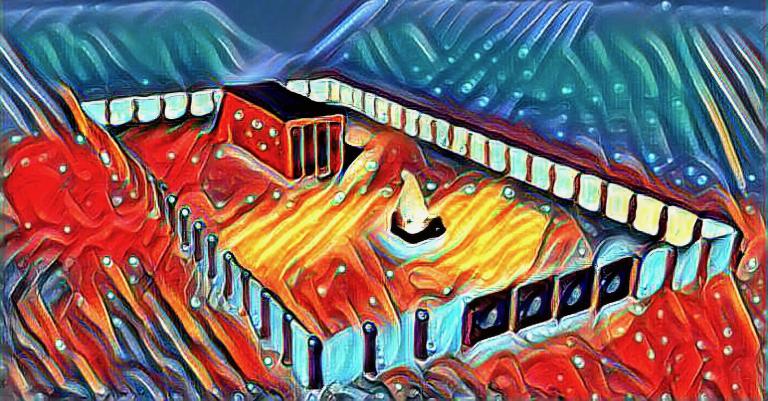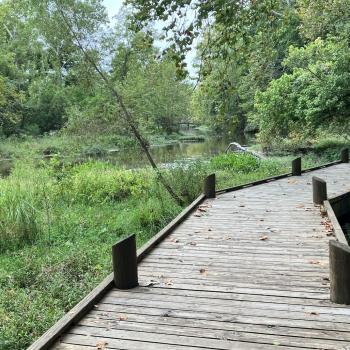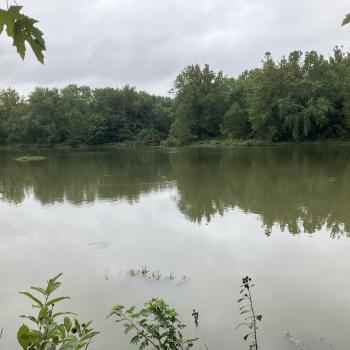Place inside the Ark the stone tablets inscribed with the terms of the covenant, which I will give to you. Then put the atonement cover on top of the Ark. I will meet with you there.
I’ve been asked to teach back-to-back weeks on the Last Days, End Times, the Apocalypse, Eschatology, etc. I’m developing this series of articles to develop the materials. I have a lot of source materials. However, I’m not going to footnote it to death, you know.
To read the first article in the series, on the Theology of covenant and the Last Days CLICK HERE
i. about hermeneutics
I took a lot of time to set up the first article. If you’d like to know more about how I’m approaching these writings, visit the above article.
In all fairness, I can say that in the last few hundred years we have developed a very scientific approach to Biblical interpretation in Western civilization (Western Europe and America).
This is an era when scholars still respect traditional hermeneutics, homiletics, and perhaps even Theology proper. However, there is pushback from postcritical scholars when other methods are not allowed at the table of Biblical interpretation.
One of the newer methods of interpretation attempts to recapture the narrative, rather than parsing every word in the original language. Once again, I take another path to get to this point in the previous article, but the outcome is the same.
ii. “Let the Story speak for itself!”
If indeed recounting the Story is where we are headed, a primary mode of communication, even among the younger generations, then I need to adjust my preaching/teaching style.
One of my seminaries uses The Homiletical Plot: The Sermon as Narrative Art Form, by Eugene L. Lowry.
To view the book on the publisher’s page CLICK HERE
If you’re locked in a particular form of hermeneutics and homiletics, and your approach could use a little deconstructionism, I recommend Eugene Lowry. If you want to bridge the communication gap, then pick up this small book, read it, experiment with it in a sermon here and there, reread it, keep it handy as a reference tool, etc.
To let the story speak for itself with this series: 1) I’m basically offering a little context for each passage, 2) sharing a small portion of the passage, and 3) making a Last Days application.
iii. Mosaic Covenant
Up until this point, God’s covenants with His people have been centered around altars and agreements. However, covenants or treaties in the ancient Near East (aNE) definitely involve palace throne rooms, and usually temples. Covenants and treaties are considered spiritual agreements, not only treaties between a couple nations.
Have the people of Israel build me a holy sanctuary so I can live among them. You must build this Tabernacle and its furnishings exactly according to the pattern I will show you. Exodus 25.8-9
This holy place is called a “sanctuary.” Sanctuary typically means a place that is set apart for something holy. It’s a term that used to be a name for churches, but it’s not used as much anymore.
The holy place is also called a “Tabernacle,” capital T-. There is a simple meaning for Tabernacle. It means dwelling place. The Tabernacle is the place where God chooses to dwell with the people of God.
iv. Tabernacle
Why is this visible dwelling place, this particular part of Moses’ covenant, important for Israel at the moment?
Israel has been in bondage in Egypt for 400 years. As slaves, they have built the massive temples to the Egyptian gods and emperors.
In 400 years no Pharaoh ever said, “You know, you Israelites are doing a great job building all my cities and tabernacles! I’m going to devote about 50 years to build a temple for your God.”
The Tabernacle is important because God saw His people slaving away for 400 years to build temples for Egypt’s false gods and their massive idols. So the one true God will now touch down and dwell with His people in a visible location, the Tabernacle.

There is now a place for Israel to treat, to make treaties with God, to commune with Him.
v. Ark of the Covenant
Place inside the Ark the stone tablets inscribed with the terms of the covenant, which I will give to you. Then put the atonement cover on top of the Ark. I will meet with you there and talk to you from above the atonement cover between the gold cherubim that hover over the Ark of the Covenant. From there I will give you my commands for the people of Israel. Exodus 25.21-22
This is important, and not only because of Raiders of the Lost Ark. It’s important because usually when a general treaty is made in the aNE between two empires, a footstool is involved. In the throneroom of the commanding emperor the two leaders formalize the treaty document. It is then stored in the leading emperor’s footstool
The Ark of the Covenant is the point where God touches down on Earth. In effect, it’s like a visible footstool in His much grander, much larger, unseen throneroom. Within that footstool, “the stone tablets” are kept. These are the 10 Commandments, the visible treaty between Israel and God.
The Israelites would easily recognize the imagery of the Ark of the Covenant in comparison to other aNE treaties and footstools.
vi. How can we apply this to the Last Times?
First, there is something unique about the covenant language of the Hebrew Bible. Covenants don’t necessarily end, ever.
Have you ever been the victim of broken trust, broken promises? God’s covenants have now remained firm for thousands of years.
Second, God establishes the fact that He will meet with Israel. In fact, this is the first official shared space between man and God since the Garden of Eden. God will Tabernacle-with them them, dwell with them. It is a mobile structure as He moves with His people, leading them into their promised land, as they let Him.
God offers to do this for His people for all ages. What or where is your promised land?
Third, as with Israel in captivity, God sees you and longs to do something for you. This is not prosperity Gospel. However, there are some people who suffer, simply slaving away for others, without fully stepping into all that God has for them. It’s not always by choice. It may be by necessity. Sometimes others just take advantage of a victim who they call a “servant-leader,” or something like that. This is a story for those people, all those who need to find sanctuary with God, until the end of time.
Please don’t play the martyr. Do you really know if you’re that person who is seeking sanctuary?













